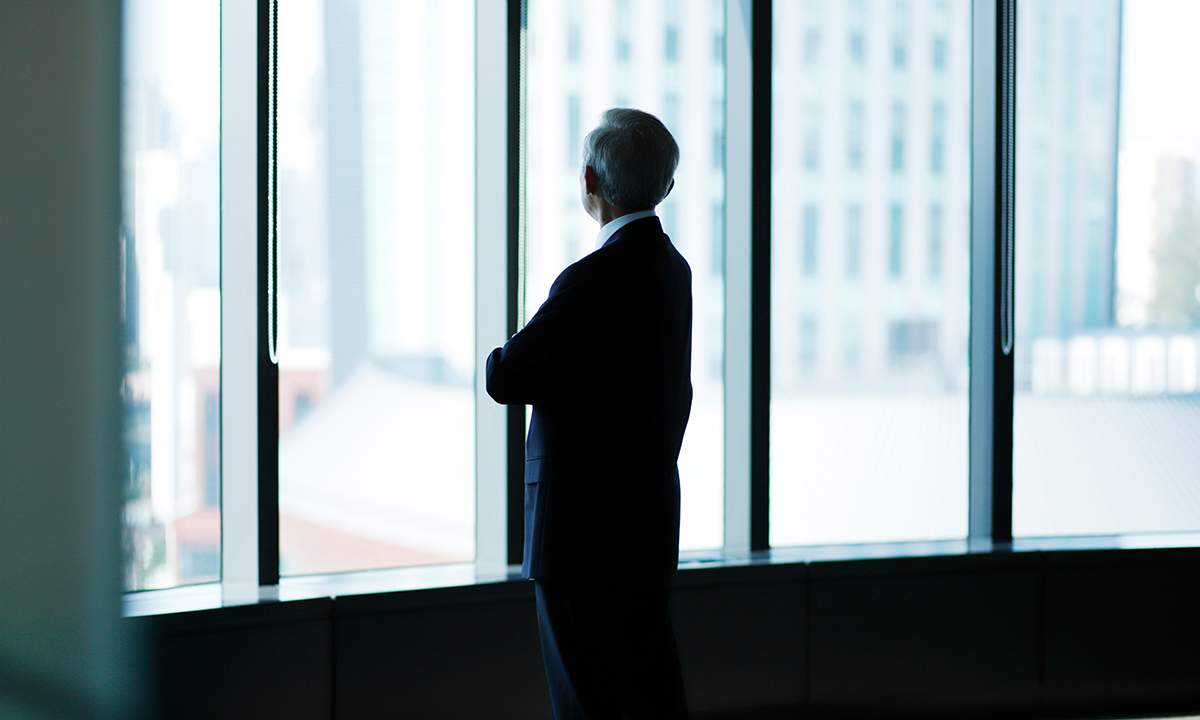
在新冠疫情的大部分時間里,首席執(zhí)行官的離職率較低,,但在平穩(wěn)引領(lǐng)公司渡過新冠疫情最嚴(yán)重的時期后,,如今他們收拾了角落辦公室,為繼任者騰出空間,。而繼任者需要應(yīng)對不確定的未來,。羅盛咨詢公司(Russell Reynolds Associates)對1,560家公司的分析顯示,首席執(zhí)行官的離職率已經(jīng)在上升,,去年達(dá)到五年來的最高水平,。
根據(jù)這家領(lǐng)導(dǎo)力咨詢公司最新的首席執(zhí)行官離職指數(shù),2022年有175名首席執(zhí)行官離職,,與2021年相比增加了30%,,與次高年份2018年相比增加了13%。該指數(shù)調(diào)查了1,500多家在全球主要股指中上市的公司,,例如標(biāo)準(zhǔn)普爾500指數(shù)(S&P 500),、日經(jīng)225指數(shù)(Nikkei 225)、富時350指數(shù)(FTSE 350)和泛歐交易所100指數(shù)(Euronext 100),。該分析未將臨時,、代理或者指定首席執(zhí)行官納入考慮范圍。
2022年,,在標(biāo)準(zhǔn)普爾500指數(shù)涵蓋的公司里,,有61位首席執(zhí)行官離職,而2021年為44位,,同比增長39%,。
許多因素導(dǎo)致近期首席執(zhí)行官離職。新冠疫情加速并引發(fā)了商業(yè)上的深刻變革,其連鎖反應(yīng)導(dǎo)致首席執(zhí)行官離職,。羅盛咨詢公司的首席執(zhí)行官康斯坦丁·亞歷山德拉基斯對《財富》雜志表示,,當(dāng)為期兩周的新冠疫情封城變成兩年時,許多首席執(zhí)行官都沉潛蓄勢,,留下來幫助公司渡過難關(guān),。
他說:“如今,這個階段已經(jīng)過去,,他們已經(jīng)準(zhǔn)備好最終離開了,。其次,經(jīng)濟(jì)的不確定性,,加上商業(yè)環(huán)境的快速變化,,導(dǎo)致企業(yè)渴求新方法、新變革和新戰(zhàn)略,,以提升競爭力,。”
能源和公用事業(yè)行業(yè)是標(biāo)準(zhǔn)普爾500指數(shù)涵蓋的行業(yè)中離職率最高的行業(yè),,共有13名首席執(zhí)行官離職,,與2021年相比增加了225%。亞歷山德拉基斯認(rèn)為,,缺乏對新的綠色能源和循環(huán)經(jīng)濟(jì)倡議的了解是該行業(yè)離職率上升的原因,。
消費品行業(yè)的離職人數(shù)第二多,2022年有10位首席執(zhí)行官離職,,比上一年增加了150%,。
名義上,首席執(zhí)行官的職責(zé)一直保持不變:向利益相關(guān)者(從股東到員工)提供高回報,。但在后疫情時代,,首席執(zhí)行官的成功有了不同的定義,因為公司需要滿足人們?nèi)找嬖鲩L的工作靈活性,、社會正義倡議和可持續(xù)性努力等方面的需求,。首席執(zhí)行官在應(yīng)對經(jīng)濟(jì)衰退的同時,還要應(yīng)對上述挑戰(zhàn),。
亞歷山德拉基斯說:“如果過渡順利,,首席執(zhí)行官的更替就可以為公司發(fā)展提供新機會,有助于簡化流程,,使領(lǐng)導(dǎo)團(tuán)隊與期望的文化和優(yōu)先事項保持一致,。”
此外,,具備必要技能(能夠通過有效的方式引領(lǐng)公司發(fā)展)的首席執(zhí)行官數(shù)量也很有限,,這一點從零售業(yè)高管職位的空缺就可以看出,。亞歷山德拉基斯表示:”企業(yè)從未經(jīng)歷過如此復(fù)雜而快速變化的環(huán)境,這增加了首席執(zhí)行官的壓力,?!?/p>
據(jù)羅盛咨詢公司稱,,預(yù)計2023年的離職率仍將高于2020年和2021年的水平,。高管再就業(yè)和培訓(xùn)公司Challenger, Gray & Christmas的另一項分析發(fā)現(xiàn),2023年第一季度,,多達(dá)418名首席執(zhí)行官離職,,與2022年第一季度相比增長了6%。
亞歷山德拉基斯指出,,無論是首席執(zhí)行官還是公司做出分道揚鑣的決定,,對公司而言,最大的收獲就是“準(zhǔn)備,、準(zhǔn)備,、再準(zhǔn)備”。
他說:“董事會需要制定強有力的繼任計劃,,為可能出現(xiàn)的首席執(zhí)行官離職做好準(zhǔn)備,。這一過程應(yīng)該在現(xiàn)任首席執(zhí)行官上任的第一天就開始?!保ㄘ敻恢形木W(wǎng))
譯者:中慧言-王芳
在新冠疫情的大部分時間里,,首席執(zhí)行官的離職率較低,但在平穩(wěn)引領(lǐng)公司渡過新冠疫情最嚴(yán)重的時期后,,如今他們收拾了角落辦公室,,為繼任者騰出空間。而繼任者需要應(yīng)對不確定的未來,。羅盛咨詢公司(Russell Reynolds Associates)對1,560家公司的分析顯示,,首席執(zhí)行官的離職率已經(jīng)在上升,去年達(dá)到五年來的最高水平,。
根據(jù)這家領(lǐng)導(dǎo)力咨詢公司最新的首席執(zhí)行官離職指數(shù),,2022年有175名首席執(zhí)行官離職,與2021年相比增加了30%,,與次高年份2018年相比增加了13%,。該指數(shù)調(diào)查了1,500多家在全球主要股指中上市的公司,例如標(biāo)準(zhǔn)普爾500指數(shù)(S&P 500),、日經(jīng)225指數(shù)(Nikkei 225),、富時350指數(shù)(FTSE 350)和泛歐交易所100指數(shù)(Euronext 100)。該分析未將臨時,、代理或者指定首席執(zhí)行官納入考慮范圍,。
2022年,,在標(biāo)準(zhǔn)普爾500指數(shù)涵蓋的公司里,有61位首席執(zhí)行官離職,,而2021年為44位,,同比增長39%。
許多因素導(dǎo)致近期首席執(zhí)行官離職,。新冠疫情加速并引發(fā)了商業(yè)上的深刻變革,,其連鎖反應(yīng)導(dǎo)致首席執(zhí)行官離職。羅盛咨詢公司的首席執(zhí)行官康斯坦丁·亞歷山德拉基斯對《財富》雜志表示,,當(dāng)為期兩周的新冠疫情封城變成兩年時,,許多首席執(zhí)行官都沉潛蓄勢,留下來幫助公司渡過難關(guān),。
他說:“如今,,這個階段已經(jīng)過去,他們已經(jīng)準(zhǔn)備好最終離開了,。其次,,經(jīng)濟(jì)的不確定性,加上商業(yè)環(huán)境的快速變化,,導(dǎo)致企業(yè)渴求新方法,、新變革和新戰(zhàn)略,以提升競爭力,?!?/p>
能源和公用事業(yè)行業(yè)是標(biāo)準(zhǔn)普爾500指數(shù)涵蓋的行業(yè)中離職率最高的行業(yè),共有13名首席執(zhí)行官離職,,與2021年相比增加了225%,。亞歷山德拉基斯認(rèn)為,缺乏對新的綠色能源和循環(huán)經(jīng)濟(jì)倡議的了解是該行業(yè)離職率上升的原因,。
消費品行業(yè)的離職人數(shù)第二多,,2022年有10位首席執(zhí)行官離職,比上一年增加了150%,。
名義上,,首席執(zhí)行官的職責(zé)一直保持不變:向利益相關(guān)者(從股東到員工)提供高回報。但在后疫情時代,,首席執(zhí)行官的成功有了不同的定義,,因為公司需要滿足人們?nèi)找嬖鲩L的工作靈活性、社會正義倡議和可持續(xù)性努力等方面的需求,。首席執(zhí)行官在應(yīng)對經(jīng)濟(jì)衰退的同時,,還要應(yīng)對上述挑戰(zhàn)。
亞歷山德拉基斯說:“如果過渡順利,,首席執(zhí)行官的更替就可以為公司發(fā)展提供新機會,,有助于簡化流程,,使領(lǐng)導(dǎo)團(tuán)隊與期望的文化和優(yōu)先事項保持一致?!?/p>
此外,,具備必要技能(能夠通過有效的方式引領(lǐng)公司發(fā)展)的首席執(zhí)行官數(shù)量也很有限,這一點從零售業(yè)高管職位的空缺就可以看出,。亞歷山德拉基斯表示:”企業(yè)從未經(jīng)歷過如此復(fù)雜而快速變化的環(huán)境,,這增加了首席執(zhí)行官的壓力?!?/p>
據(jù)羅盛咨詢公司稱,,預(yù)計2023年的離職率仍將高于2020年和2021年的水平,。高管再就業(yè)和培訓(xùn)公司Challenger, Gray & Christmas的另一項分析發(fā)現(xiàn),,2023年第一季度,多達(dá)418名首席執(zhí)行官離職,,與2022年第一季度相比增長了6%,。
亞歷山德拉基斯指出,無論是首席執(zhí)行官還是公司做出分道揚鑣的決定,,對公司而言,,最大的收獲就是“準(zhǔn)備、準(zhǔn)備,、再準(zhǔn)備”,。
他說:“董事會需要制定強有力的繼任計劃,為可能出現(xiàn)的首席執(zhí)行官離職做好準(zhǔn)備,。這一過程應(yīng)該在現(xiàn)任首席執(zhí)行官上任的第一天就開始,。”(財富中文網(wǎng))
譯者:中慧言-王芳
After providing steady hands through much of the pandemic, longtime CEOs are now boxing up their corner office, making room for new leaders to navigate an uncertain future. Turnover among chief executives, already on the rise, hit a five-year high last year, according to a Russell Reynolds Associates analysis of 1,560 companies.
The leadership advisory firm’s latest index of CEO turnover found that 175 CEOs left their posts in 2022, a 30% increase compared with 2021 and up 13% compared with the next highest year, 2018. The index looked at more than 1,500 companies listed on the world’s leading stock indices, like the S&P 500, Nikkei 225, FTSE 350, and Euronext 100. The analysis did not take into account interim, acting, or designated CEOs.
The S&P 500 saw 61 CEO exits in 2022 vs. 44 in 2021, a 39% increase year-over-year.
A number of factors influenced the recent CEO turnover, and many are ripple effects of a pandemic that accelerated and sparked far-reaching changes in business. Many CEOs hunkered down when two-week pandemic lockdowns turned to two years and stayed to help shepherd their companies through the unknown, Constantine Alexandrakis, CEO of Russell Reynolds Associates, tells Fortune.
“Now that this phase has passed, they are ready to finally depart,” he says. “Second, economic uncertainty combined with a much faster rate of change in the business environment is causing companies to desire new approaches, new innovations, and new strategies to compete more vigorously.”
The energy and utilities industry had the largest turnover rate on the S&P 500, with 13 CEOs leaving their companies, up 225% compared with 2021. Alexandrakis credits a lack of familiarity with new green energy and circular economy initiatives as the reason for increased turnover in the sector.
The consumer sector experienced the second-most departures, with 10 CEOs leaving in 2022, a 150% increase over the prior year.
On paper, the role of a CEO has remained the same: deliver high total stakeholder return from shareholders to employees. But CEO success looks different post-pandemic as companies grapple with increased demand for work flexibility, social justice initiatives, and sustainability efforts, among other things. That’s all while navigating the economic downturn.
“Done well, CEO turnover presents an opportunity for companies to streamline processes and align their leadership teams to the desired culture and priorities,” Alexandrakis says.
There’s also a limited supply of CEOs with the requisite skills to effectively lead today’s companies, as evidenced by the corner office gaps in retail.”Never before have businesses operated in such a complex and rapidly changing environment, and that increases the pressure on CEOs,” Alexandrakis says.
Turnover rates in 2023 are expected to remain above 2020 and 2021 levels, according to Russell Reynolds Associates. A separate analysis from executive outplacement and coaching firm Challenger, Gray & Christmas found that as many as 418 CEOs left their jobs in the first quarter of 2023, up 6% compared with the first quarter of 2022.
Whether it’s ultimately the CEO’s or the organization’s decision to part ways, Alexandrakis says the biggest takeaway for companies is to “prepare, prepare, prepare.”
“Boards need to plan and prepare for potential CEO turnover with a robust succession plan,” he says. “This process should begin as soon as the first day of a current CEO’s tenure.”






